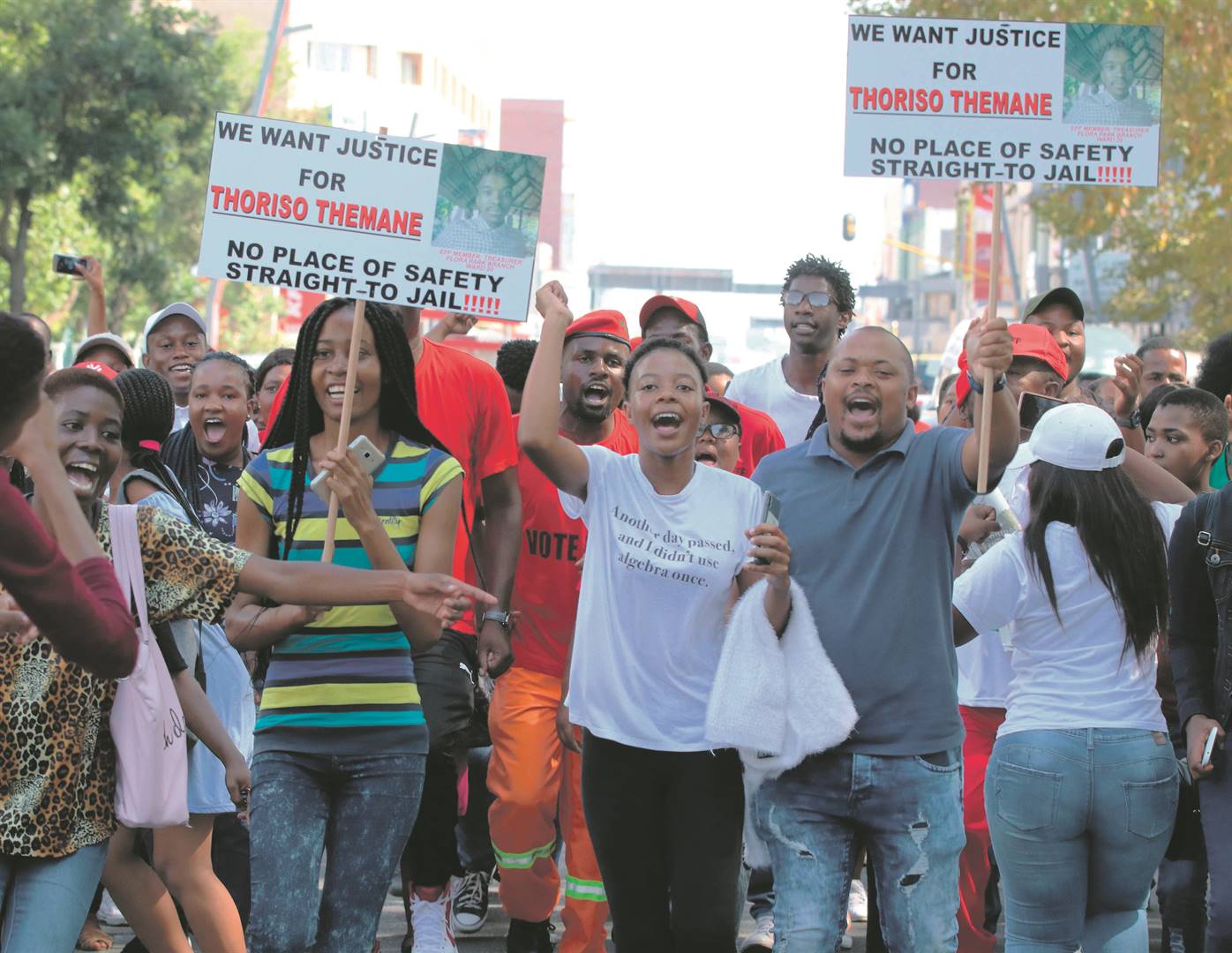
Society underestimates the extent of emotional anguish children experience, writes Simangele Mayisela.
History has taught us that the ability to kill has no age. A search on Google yields a number of results.
The key question that continues to boggle minds is why children as young as seven years old and those in adolescence kill.
No two murder cases by children are the same, however, a closer look at the nature of the circumstances around murder offers insight into why youngsters commit these ghastly acts.
South Africans were horrified by the death of a three-year-old who was stoned and rolled down the hill by children only four years older than him at Primrose squatter camp in Germiston.
Community members were among the first to speculate that these children were acting out scenes that they had earlier witnessed in their own community.
It seems that, as adults, we do not fully appreciate the impact of our actions on developing minds.
Children who are exposed to these fatal and traumatic orgies do not fully comprehend the consequences of beatings and stonings, but their impact is enduring.
While murders by younger children are a concern, the rate of teen murderers is higher and their reasons are just as varied and a sign of a troubled society.
The Stats SA General Household Survey of 2011 shows that 92% of school children are exposed to violence in the form of corporal punishment by teachers, with the remaining percentage distributed between experiences of verbal abuse by teachers, peer physical and verbal abuse, or incidents of bullying.
In 2012 a Grade 11 teenager from PT Xulu Secondary School in Vosloorus, Gauteng, murdered the notorious school bully, who had bullied him for a significant period while he had no protection or support from the school or police.
In some instances, acts of revenge are not spontaneous, they may take the shape of a well-contemplated act of murdering the perpetrator, leading to outcries of premeditated murder.
Associated with school violence is teenagers being violent towards teachers, even killing or attempting to kill them, due to the continuous violence meted out by the adults through corporal punishment, verbal abuse and name-calling of learners.
Picture a class bursting into laughter from the teacher’s demeaning utterance to a learner.
The outcome is severe emotional scars that adolescents, in particular, find hard to recover from.
While the abusive utterance ends when the period is over, the teacher’s words ring over and over in the victim’s mind, causing severe emotional distress.
In severe cases, the young person finds relief in a fatal action towards the teacher, or another learner who may repeat the teacher’s utterance on school grounds.
In understanding children who display aggression and ultimately kill, one should not ignore the child’s family background.
As an educational psychologist, I encounter numerous teenage boys and girls who suffer emotional yearning for a relationship with their fathers.
Society underestimates the extent of the emotional anguish children experience due to parental neglect.
The preoccupation with the absent parent, usually the father, has negative repercussions on the child’s mental state, from feeling unwanted to self-loathing, low self-esteem and envy of peers with parental support, usually expressed as bullying and name calling, like “cheese boy”.
Besides neglect, domestic violence and the repeated witnessing of the suffering of the violated parents cause emotional instability and alter the child’s capacity to form healthy and trusting relationships with peers, and more so if the child finds it difficult to express their harboured anger towards the perpetrating parent.
The child’s need for revenge for the victim parent may be unconscious, only to be unleashed on to peers for reasons that seem, at a conscious level, to pertain to altruism, like “He [the peer] was teasing that girl; I was merely preventing him from causing her harm” – unfortunately, by murdering.
There is some amount of truth in the saying that there’s a thin line between hunger and aggression, especially if the poverty is severe and the prospect of relief seems unfathomable; hopelessness creeps in.
Poverty is not only experienced physically, it also affects the formation of a young person’s identity and their sense of belonging.
This is worse when the young person’s academic performance is below the norm and with no additional academic support – as such support often comes with economic viability.
In such instances, a young person has nothing to lose, is trapped in a dangerous state of being and may find comfort in joining a like-minded and needy group of youngsters.
In such group thinking, a sense of belonging and self–esteem are nurtured by mutual contract in violent criminal activities, with the likelihood of injuring and even committing murder.
One would not have painted a complete picture without discussing the structural violence perpetrated by politics and state organs, that fail their poor citizens.
While factors like inadequate decent shelter contribute to the lack of self-respect and poor development of healthy personal boundaries, depriving citizens of quality education is the ultimate act of violence.
Such structural violence feeds hopelessness and mental illness, causing adults to be depressed and socially withdrawn or opt for deviant or self-harming coping mechanisms such as excessive alcohol use and drug dependence.
Perversely, adolescents are likely to externalise poverty and act out their frustration through horrendous deeds like drug use, violent crime and even committing murder.
A million-dollar question often asked is: What makes a young person from a socioeconomically stable family perform acts of murder?
There is no particular answer to this question. We may not be exposed to the entire picture of the experiential world of the young person in question.
Parents and family members are people with relational nuances that may not be obviously damaging to the other person, especially when one is not close to them.
This may be about poor parent-child attachment challenges resulting from emotional deprivation, material overindulgence, communication difficulties, and authoritarian or laissez-faire parenting styles, which respectively amount to over-control or neglect; all of which are not determined by socioeconomic standing, but personality traits.
When angered, these children are capable of the successful planning and execution of a swift murder, for example by poisoning, or committing vandalism by destroying the parent’s treasured items without remorse at seeing the parent’s misery and frustration.
As the youngster gains independence and detachment from parents at adolescence, these antisocial traits may show full expression.
This is where acts of murder are likely to occur and be repeated if juvenile criminal justice is not instituted with success after the first murder.
A special social aspect relating to child indoctrination is where children are mentally manipulated by an organised system of adults who use them to kill.
An example of such is child soldiers, gangsters and some members of religious cults.
These systems leverage on the youngsters’ need to belong to bigger missions and to be taken seriously by leading them to perform gross human violations like torture and murder.
The sad truth is, children have the capacity to commit murder and have a myriad of reasons for doing so.
Awareness is not enough; we must, as society, commit to eradicating each of these identified causes in order to reduce the harm on our children.
Mayisela is an educational psychologist and senior lecturer at Wits University
TALK TO US
Have you had the unfortunate experience of knowing a youngster who was murdered or committed murder, and how have you tried to make sense of it?
SMS us on 35697 using the keyword MURDER and tell us what you think. Please include your name and province. SMSes cost R1.50. By participating, you agree to receive occasional marketing material




 Publications
Publications
 Partners
Partners








